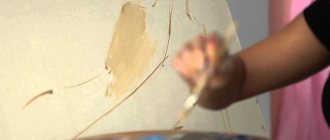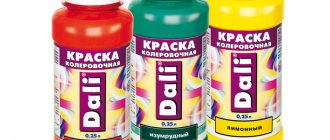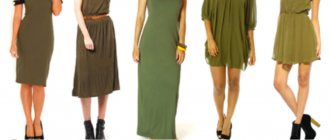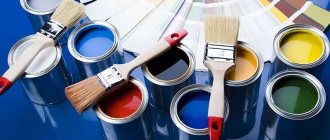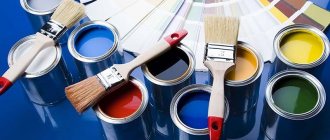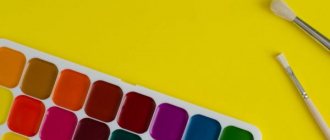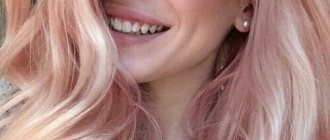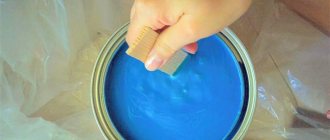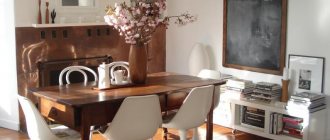Combinations of pink are a win-win when you need to update your design, create interesting images and drawings. Offers from markets and shops are not always suitable for the intended idea. You can achieve unusual combinations yourself if you know how to get pink from paints.
Various shades of pink are very popular when decorating apartments and houses.
Characteristics and composition of pink color
Its main features:
- not part of the primary color spectrum;
- unsaturated, unlike its related red;
- combines many similar tones.
Ingredients: white and red. When mixed with others, it ranges from berry (blue based) to salmon (orange based).
Shades are divided into subgroups:
- light and warm;
- light and cold;
- medium warm;
- medium cold;
- pale;
- bright.
Simple and complex shades of pink.
How to make gray by mixing colors
Hairdressers who use highlighting techniques are well aware of the possibility of obtaining an ashy color by combining white and black. Indeed, the easiest way to make it is to dilute a drop of black with a certain amount of white. In watercolor, gray can be made even easier: dilute black paint with water. The less white in the mass, the darker the gray turns out.
Mouse tone can also be cold or warm. This is due to the second method of creating it - mixing dyes of opposite meanings. For example, gray is prepared by combining green and red, and since the latter is warm, the resulting color will also not be cold. To give ashen a “frostiness” without yellowness, it must contain blue notes. Adding brown, red, and beige will help “warm” the tone.
It is not recommended to mix paints of different types or from different manufacturers. Their brightness and density indicators can vary greatly, which will affect the quality of the result. Any ready-made dye can be made lighter or darker by dropping a little white or black, respectively.
Getting the base pink color
Basic pink is characterized as light red. To obtain it, most standard purple and scarlet tones are used. Each of them gives a different shade, so the mixing proportions to create the base color will depend on the chosen paints.
There are 2 methods:
- Red is diluted with water. The saturation can be adjusted by adding more or less liquid.
- Mix white and red. When you change the proportions, the color becomes brighter or lighter.
Color Basics
Coloristics is the science of color - its nature, basis and components, basic and additional tones, characteristics and color contrasts. Coloristics discusses in detail the rules for mixing shades, all of which are based on knowledge of the color wheel.
Any artist knows that colors are divided into chromatic (colored) and achromatic - the latter, when combined, give a gray mass. By mixing yellow, blue and red in different variations and diluting them with black and white, you can get the rest of the many tones and halftones.
Green and its varieties can also be made with your own hands; all you need is a basic set of gouache, watercolor, acrylic or other types of paints. The color can be lightened or darkened, and new notes can be added to it.
Universal rules for mixing paints to get pink
To get bright or, conversely, subdued tones, you can “play” with colors. But there are universal rules.
Selecting red
The nature of red in the color scheme will affect the final result of the work performed. For example, bright scarlet will give a natural tone, brick red – peach, blood red – fuchsia.
Choosing the Basics
You can mix paints if they belong to the same group and have a homogeneous chemical composition.
The choice of incompatible ingredients leads to uneven distribution of materials, cracks, and delamination.
For example, if watercolor and acrylic paints interact with each other, then oil cannot be mixed with other bases.
Procedure
To avoid waste of materials and not to spoil them, mixing must be done in stages:
- Prepare a spacious container so that the liquid can mix easily and freely.
- Dilute part of the base with the required amount of the selected color, stir thoroughly. Cover a sample surface with the mixture and see how the composition behaves when dried.
If you are satisfied with the trial result, you can start coloring; if not, correction should be made.
Features of obtaining pink from various colors
To obtain the desired shade, determine the type of paint.
Artistic
The most common options:
- Watercolor. When working with it, water acts as a clarifier. In the standard palette set you can find carmine. When diluted with liquid, the desired tone is obtained. Adjust its saturation with the amount of water.
- Gouache. Also created on a water basis. It loses some brightness once it dries, especially when blended. To enhance the effect, add more red or apply a second layer of the mixture.
- Acrylic. With its help you can adjust the desired shade. Acrylic has water-repellent properties and durability, lays uniformly on the surface, and dries quickly. It is enough to select a color to match the base and mix until you get the result.
- Oil. Such paints are more difficult to use. It is better to study their properties in advance in order to obtain a clean, rather than yellowish and dirty tint. For work it is better to use linseed oil. The working procedure is the same as with gouache. But if it becomes lighter when it dries, then the oil, on the contrary, darkens.
Shades of pink are widespread in painting.
Construction
They are used to paint facades, walls and ceilings. Glossy paints are bright and shiny, matte colors are muted and pale. To prepare them, choose a white base and a universal red color. White is poured into the container, adding dye little by little and stirring until the result is obtained. This is done using a construction mixer to avoid specks and veins.
Food colorings
White food colors are not produced; they are replaced by powdered sugar. A pleasant pink tone can be obtained by mixing it with water and red food powder. It must be added little by little due to the high concentration of the dye.
As a replacement, you can use natural berry or beet juice.
How to get orange
Creating orange is easy by mixing colors. For this purpose, gouache, watercolor, acrylic and other paints and even plasticine are used. You can mix colors in a glass jar or on a white palette - both options will be convenient.
Preparing to Mix
In order for the final color to be correct and suitable for a specific task, you need to choose the same type of paint from the same manufacturer (by code, number). Otherwise, the result may be unpredictable, because the density and brightness of the materials will vary. To work, you will need yellow and red paint, from which the classic orange tone is obtained. Other options may require other paints.
Before you start mixing shades, it is important to make sure that there is no dirt or dust on the table, and that the containers for mixing paints are also clean. Professional artists often combine colors directly on paper or canvas, but this method requires skill and is not recommended for beginners. Also for work you need to prepare a brush or several brushes for taking materials.
Process of obtaining color
How to make orange from paints? The easiest way to obtain combined tones is from gouache, which is easily mixed with a brush. You need to take a little yellow dye, add a drop of red, and mix thoroughly. Depending on the need, red should be continued to be added or the result should be left in its original form. When working with watercolors, you need to drop some water on the palette, then add both colors, combine them, you get orange.
To make yellow-orange paint directly on paper, the colors are mixed with strokes. If red is at the bottom and yellow is applied on top of it, the tone will be dark orange. To create a lighter shade, proceed in the reverse manner. It is important that the brush is completely free of foreign impurities, otherwise the shade will look dirty.
Correct proportions
The amount of red and yellow paint will depend on the desired tone saturation. If the proportions are equal, then the color will become classic - bright orange, familiar to everyone. In order for the shade to be light, yellowish-golden, the yellow tone should predominate, and to create a fiery color, add more red.
Working with oil and acrylic paints
The peculiarity of oil dyes is their depth of tone, high density, and oily structure. They need to be mixed much more thoroughly than gouache or watercolor. Artists use layers of brushstrokes on the canvas, using the “red on yellow” or “yellow on red” technique, depending on the desired effect. You can lighten the finished tone using white oil paint. It is important not to combine more than three different shades at the same time, otherwise there is a risk of paint delamination or getting a color with a grayish tint.
When using acrylic materials, strokes are applied next to each other, at a close distance. Afterwards they begin to mix them carefully to obtain the desired tone. Acrylic paints can be combined in a transparent container, remembering to use solvents if the base is too thick. Solvents will also help to somewhat slow down the drying process, which will be necessary if you need to experiment with color. When working with acrylic, it is better to use a synthetic brush; when working with oil, it is better to use a natural one.
Getting different shades
Combination shades consist of 3 or more primary colors.
By adding a few contrasting drops to the red and white mixture, you can get unexpectedly interesting results.
Dirty pink
For production, scarlet, white and gray are used.
Hot pink
Coral, cyclamen, fuchsia - all these shades are called hot pink, but there are some differences between them. By mixing rich red with white, you can get sea coral by taking a little yellow - cyclamen. A drop of lilac gives a fuchsia tint.
Rules for mixing paints to obtain different shades of pink.
Pink-peach
Warm peach is obtained if you add brick.
Pink-lilac
This cheerful tone is formed by mixing pink and blue.
Other
With the help of brown, “pink clay” is obtained. Adding blue creates a cool pink mist effect. Gray will give the base a smoky, ashen tone.
Visible spectrum colors
There are three primary colors, the combination of which will lead to all other shades of the palette. They are called basic and include red, blue, yellow. Black and white stand apart - these colors cannot be created by mixing gouache, watercolor, plasticine, but they actively dilute and darken different tones.
All basic tones are considered the basis of the color wheel and optical spectrum, and are included in the range of visible light radiation. If you examine the spectrum under magnification, the white pixel will be decomposed into several shades. But it would be a mistake to think that you can make white by combining such tones on the palette - this effect is only available in computer graphics.
Combining colors of the visible spectrum
If you take a color wheel divided into 7 colors (red, orange, yellow, green, blue, indigo, violet) and spin it, you can see the color white with your own eyes. Why does the human eye perceive the main shades of the rainbow this way? This happens due to the additive mixing (addition) of tones, which are again combined into a light beam (it has a whitish color). But when mixing paints, this effect cannot be achieved, because some colors will suppress others.
Whitewash cannot be obtained even with the help of a printer - you will have to pour ready-made paint into the cartridge. Attempts to combine colors always lead to the formation of intermediate tones, and sometimes completely achromatic - dirty, gray. This applies to any paints - acrylic, gouache and others.
Table for obtaining pink shades
The final result is influenced by proportions. This table shows the most common options.
| Colors | Proportions | Result |
| White and scarlet | 2:1 | Base tone |
| White, scarlet and brick | 2:1:1 | Peach |
| White, scarlet and purple | 2:1:1 | Fuchsia |
| White, scarlet and yellow | 2:1:1 | Cyclamen |
| White, scarlet and gray | 2:1:1 | Dirty tone |
| White, scarlet and blue | 2:1:1 | Lilac |
Correct proportions
The proportions of red and yellow paints depend solely on what shade you want to get as a result. So, when mixing paints in equal proportions, the result is a classic orange color. In order for the final orange to be more golden or yellow-orange, yellow paint must predominate. While to get a rich fiery orange, more red should be added. You can also soften the resulting shade of orange by adding a little white paint, then you will get a lighter, pastel tone. But to darken the tonality, it is better not to use black, since it does not so much darken as it drowns out the color spectrum. To achieve a darker shade of orange, it is recommended to use a little dark gray.
Orange Spectrum Names
